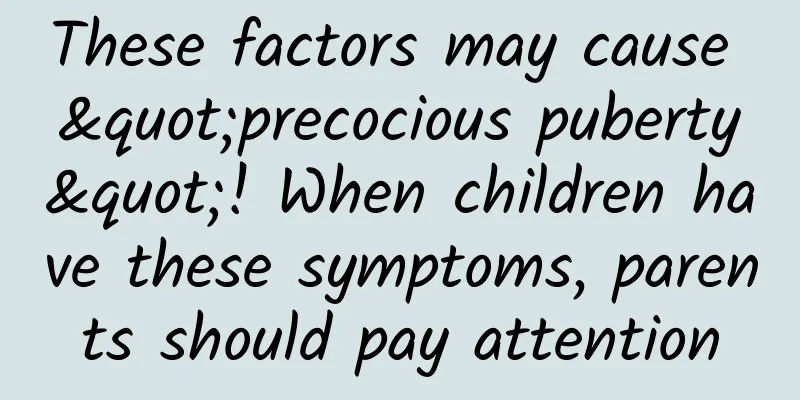Can H1N1 flu kill people? The 1918 flu code that has been frozen for a century

|
During the Spring Festival, Taiwanese celebrity Big S died suddenly from influenza, and this breaking news shocked the public. A friend asked me, why can influenza kill people? Yes, influenza is not a disease similar to the cold as some people think. It has an indelible painful memory in human history. Black memories from 1918 In March 1918, a cook in a military camp in Kansas, USA, collapsed with a sore throat and a low-grade fever, and then the entire camp was quickly engulfed by influenza. This plague, initially mistakenly called the "Spanish flu," spread like wildfire around the world, killing 50 to 100 million people in just 18 months, which may exceed the total death toll of the two world wars. Soldiers on the German and French fronts coughed up blood in the trenches, body bags piled up on the streets of Philadelphia, and entire Eskimo villages in Alaska were exterminated. This disaster even rewrote the course of history to some extent. Due to the sharp decline in troops, the First World War also came to an abrupt end that year. When the epidemic mysteriously disappeared in 1920, people still didn't know what had attacked them, and the complete genetic code of the pathogen disappeared, leaving only a huge gap in medical history. Viral archaeology: a time capsule in the frozen soil In 1997, Swedish pathologist Johan Hultin accidentally read the latest research on the pathogen of the 1918 influenza by American scientist Jeff Taubenberger, which reminded him of a study he had worked hard on when he was young. In 1951, in order to complete his doctoral research, Hultin excavated the remains of people who died of the 1918 influenza pandemic in the permafrost of Alaska. Although samples of lung tissue from the deceased were successfully obtained at that time, due to technical limitations and the lack of PCR technology at that time, the virus could not be successfully replicated, and the research was unsuccessful. More than 40 years later, the two scientists got in touch, and with the encouragement of Taubenberger, the 76-year-old Hultin once again set foot on Brevig, Alaska, and extracted samples from the lungs of an Eskimo female remains in the frozen soil at minus 30 degrees. Soon after, Taubenberger's laboratory confirmed that Hultin's expedition was a success. The permafrost samples from Alaska helped him complete the last screen, basically confirming that the pathogen of the Spanish flu was the influenza A (H1N1) virus. In 2005, Terrence Tumpey's team at the US Centers for Disease Control and Prevention published their results, and they revived the virus in the laboratory! echo At this point in the story, we realize that the 1918 flu virus has not disappeared. After that outbreak, many people became immune to the original virus, but it has also continued to change and evolve, lurking around us for more than a hundred years. There is a small peak of flu almost every autumn and winter, and there are always a few people who become seriously ill and struggle to fight it in the ICU. The scientist who discovered it, Taubenberg, said: "You can still find genetic traces of the 1918 virus in the seasonal influenza viruses circulating today. Every human infection with influenza A originates from the 1918 influenza outbreak." |
<<: First day of work! This spring health guide will help you start the year full of vitality!
Recommend
Are chestnuts alkaline or acidic? How to choose chestnuts
The acidity and alkalinity of food is an aspect t...
Traditional Chinese Medicine Treatment Methods for Uterine Fibroids
I believe that most of us don’t know much about u...
What to do if you haven't had your period for 11 days
Menstruation means that it will come on the day. ...
Introduction to the swelling of the first few months of pregnancy
Pregnancy is a big deal. For women, pregnancy mea...
How big is Mars? How big is Earth? Why is Mars' atmosphere so thin?
Mars has a variety of terrains, just like Earth, ...
How to replenish calcium deficiency during pregnancy
As the key of a family, the expectant mother will...
Sad Nipple Syndrome Symptoms
The nipple, also called the teat, is the raised c...
How long will the bleeding last after a normal birth?
Natural childbirth poses a greater safety risk to...
Fetal abdominal circumference standard comparison table
For pregnant friends, the most important thing is...
What is the largest country in North America? Which part of North America is high and which is low?
People who know geography and North America know ...
Treatment methods for dysmenorrhea caused by deficiency of both qi and blood
Dysmenorrhea due to deficiency of both Qi and blo...
How old can babies eat solid food? What are the requirements for babies to eat solid food?
We all know that babies are generally breastfed s...
There is a lump in the breast that hurts when pressed
Many people will find rashes in their breasts, an...
How to induce menstruation if menstruation is delayed
The vast majority of women experience amenorrhea,...









